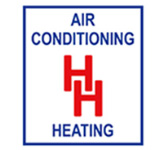
A furnace is often a background player for your home, helping keep you warm in the cold winter months. It regularly won't be noticed until something breaks down.
One root cause might be that your furnace has a cracked heat exchanger. It’s a potentially dangerous issue, so it’s critical to know the symptoms of a cracked heat exchanger and what you should do if you believe that is the problem.
What Is a Heat Exchanger in a Furnace?
A heat exchanger helps transition heat from the combustion chamber inside your furnace to the air that flows inside the air ducts. It generally does this with coils or tubes that heat the air while serving as a barrier to keep the gasses created in the combustion chamber, called flue gasses, from getting out into your home.
Is a Cracked Heat Exchanger Dangerous?
Given its key role, it isn't surprising that a damaged heat exchanger can pose a risk. A damaged heat exchanger can permit dangerous gasses – such as carbon monoxide, which can be lethal – to circulate throughout your home.
For this reason, don't ever turn on your heater if you believe it has a cracked heat exchanger, as letting it run could make the entire family ill. Reach out to an HVAC professional immediately if you think your heater has a cracked heat exchanger that needs repair.
Four Warning Signs of a Cracked Heat Exchanger:
- Furnace turns off: A crack in your heat exchanger can cause your furnace to turn off.
- Odd Smells: If the air coming out of your furnace has an intense chemical odor, it might be a sign gas is leaking through cracks in your heat exchanger. These byproducts, which will often smell like formaldehyde, are a significant warning sign.
- Carbon monoxide alarm is triggered or you notice poisoning symptoms: If a cracked heat exchanger is relieving carbon monoxide into your home, your carbon monoxide alarm could go off or family members might start experiencing signs of carbon monoxide poisoning. Side effects include headaches, dizziness, weakness, nausea, vomiting or feeling tired. If the alarm goes off or you feel unwell, exit the home as soon as you can and then call for help.
- Soot: If you notice black sooty buildup around the exterior of your furnace, it’s an indication something could be seriously wrong.
What You Can Do if Your Furnace Heat Exchanger is Cracked
If you suspect your furnace has a cracked heat exchanger, contact a professional well versed in furnace installation Mechanicsburg right away so they can examine your system and, if needed, perform a furnace heat exchanger replacement. Costs will fluctuate depending on the situation, but estimates often hover around $1,000 to $3,000.
Fortunately, the good news is that heat exchangers are regularly protected by the warranty. You’ll want to review the warranty paperwork on your furnace, as while the warranty may not cover the entire cost of repairs, it can significantly lower your bill.
How to Prevent a Cracked Heat Exchanger in Your Home
One of the easiest ways to minimize the risk of problems in your furnace overall is through routine furnace maintenance. Furnaces offer the most benefits when they run efficiently. Hiring a trained professional to inspect your furnace for old parts, clogs in the air filters and other common problems can help you avoid getting a big bill later on.
It’s also beneficial to take a look at your furnace filters every few months – it’s recommended some filters be swapped out every 90 days or sooner if they are dirty or grimy. While the filters aren't a part of the heat exchanger itself, the strain of dragging air through a clogged filter makes your entire furnace work harder to accomplish its job. And the harder your furnace has to work, the more strain components like the heat exchanger will sustain.




